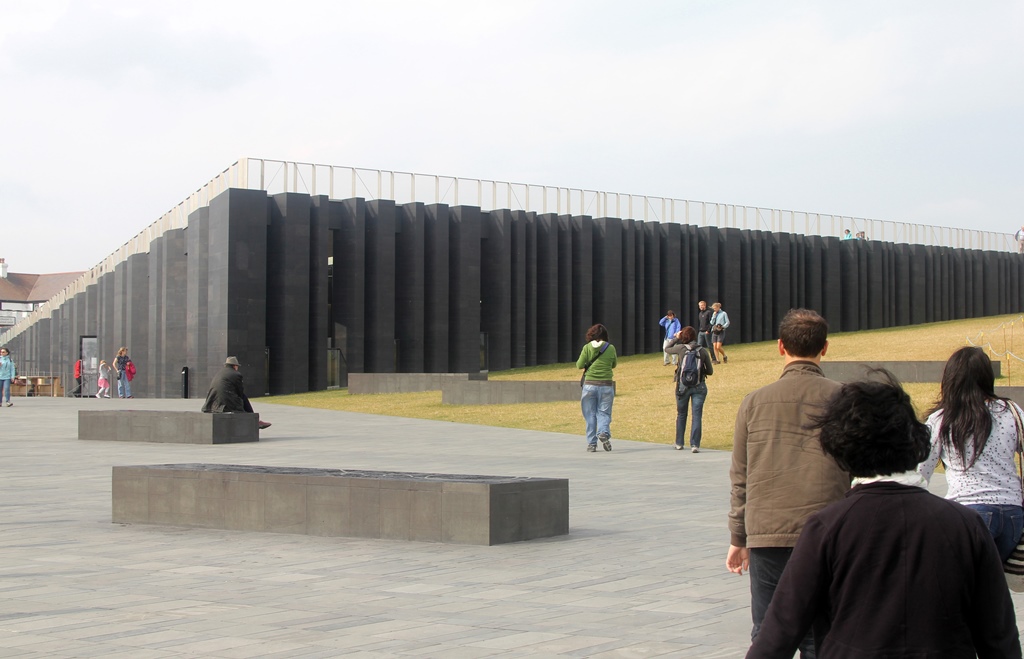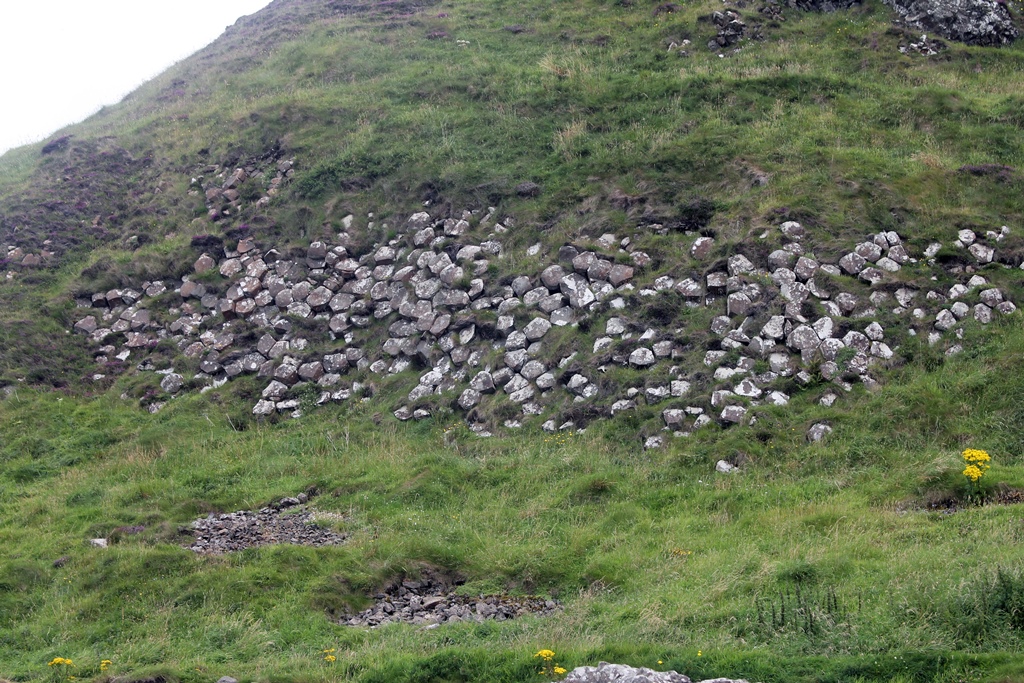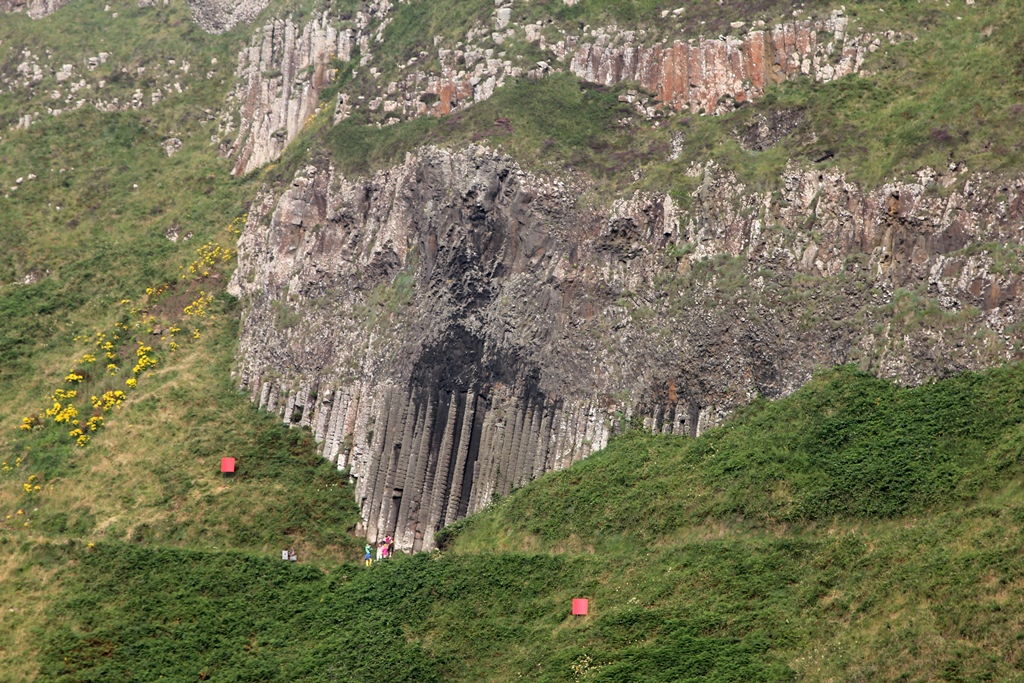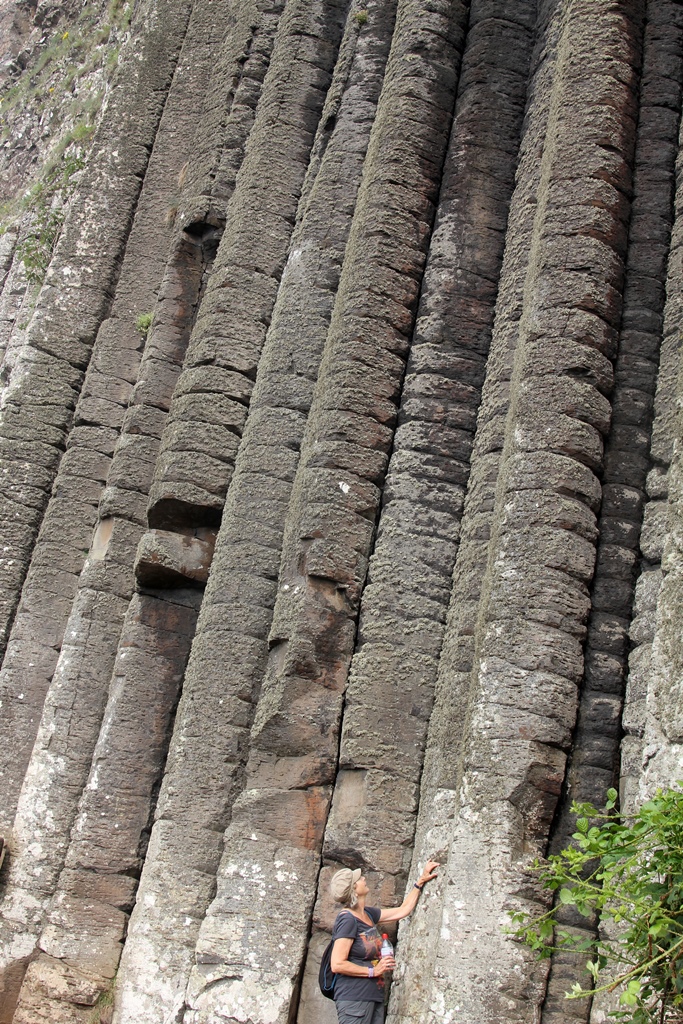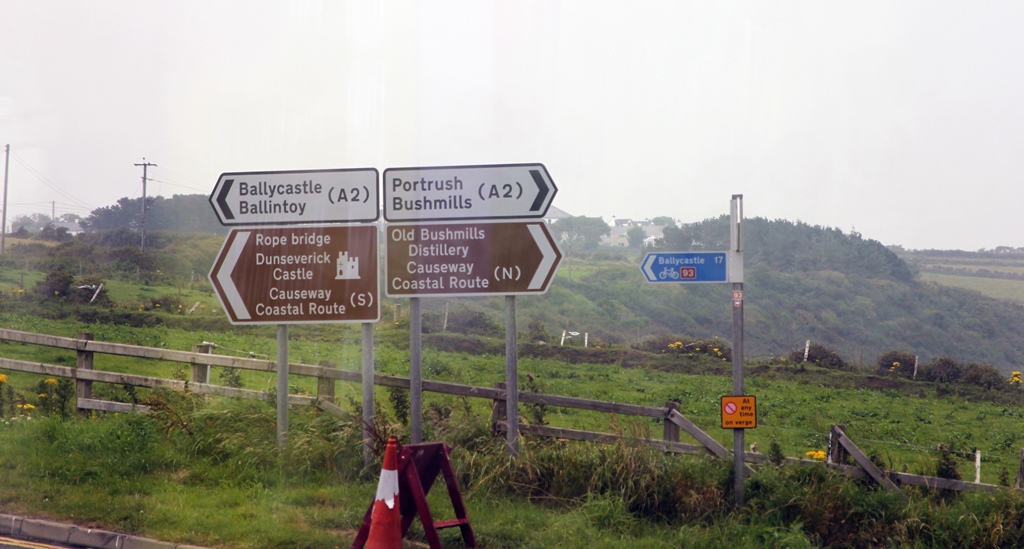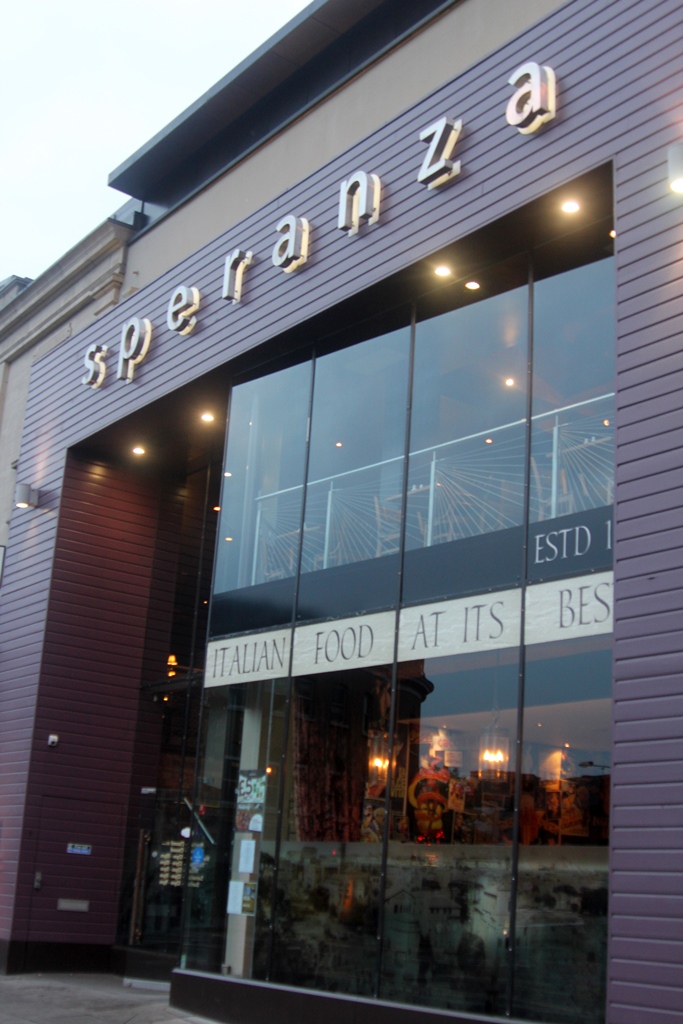The Giant's Causeway is possibly the top tourist destination in Northern Ireland, and
was definitely the top attraction on our tour (which was actually called The Causeway Tour).
It is located on the coast, just a few miles from Bushmills. Like Carrick-a-Rede, it
is administered by the National Trust. At the time of our visit, it had a brand new
Visitors' Centre, a state-of-the-art replacement for the previous visitors' centre,
which had burned down in 2000. We chose not to visit the Visitors' Centre for a couple
of reasons. First, it's on the expensive side - about $13 US per person (and we were
used to US National Park visitors' centers, which tend to be free). Also, we had a
fixed amount of time available to us before our bus was to head back to Belfast, and we
wanted to spend the time exploring the Causeway.
Philip and Nella and Visitors' Centre
The Causeway is about a half mile walk from the Visitors' Centre. There is a
free shuttle bus with a stop behind the Visitors' Centre, but we elected to take
the walk. The weather had improved somewhat since Carrick-a-Rede - it was still
cloudy and occasionally sprinkly, but the wind and the rain had both diminished
somewhat. Also, it appeared that the walk would be scenic, and we felt that we
would enjoy it more on foot.
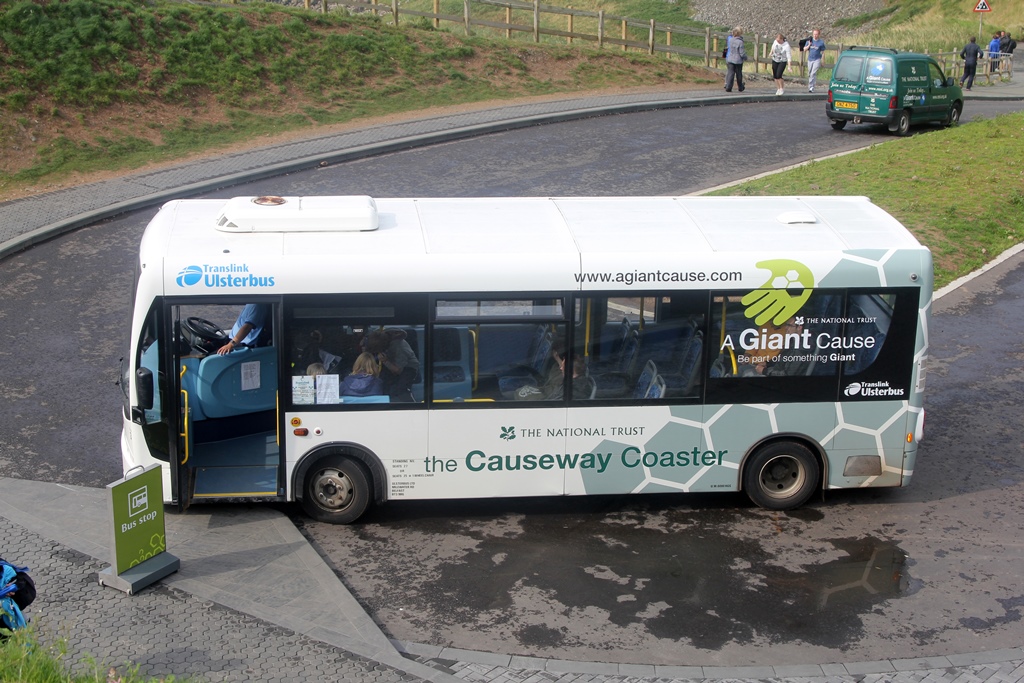
Shuttle Bus to Causeway
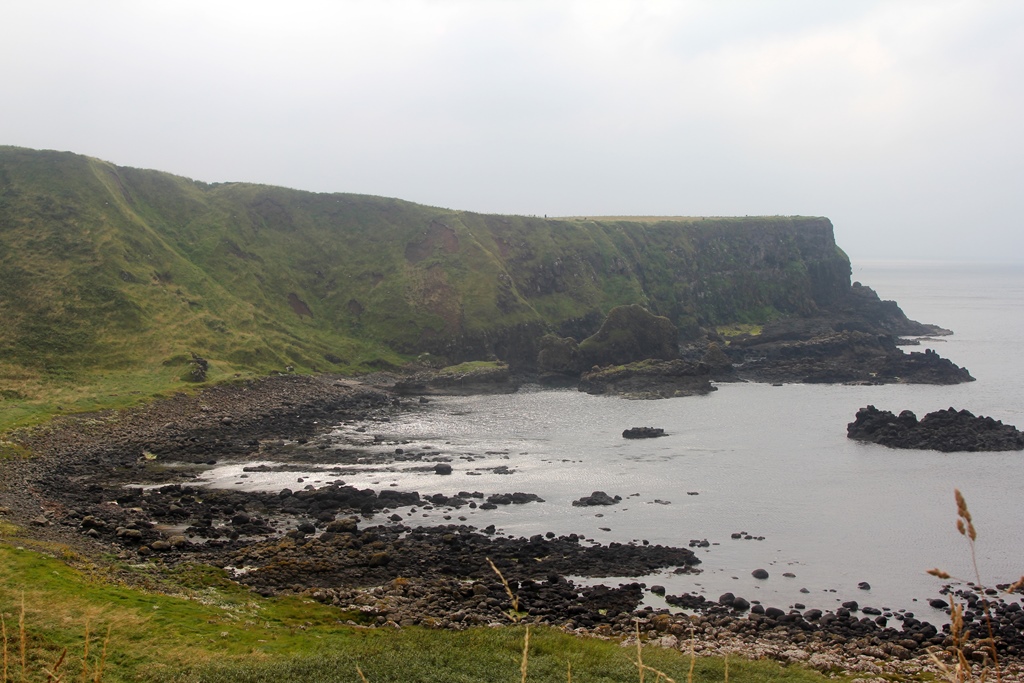
Shoreline
Before long we could see a rocky peninsula in the distance, jutting out from
the shoreline, with people crawling all over it. As we got closer, we could
see the rocks in more detail, and it became apparent that we were approaching
the main attraction, the Giant's Causeway itself.
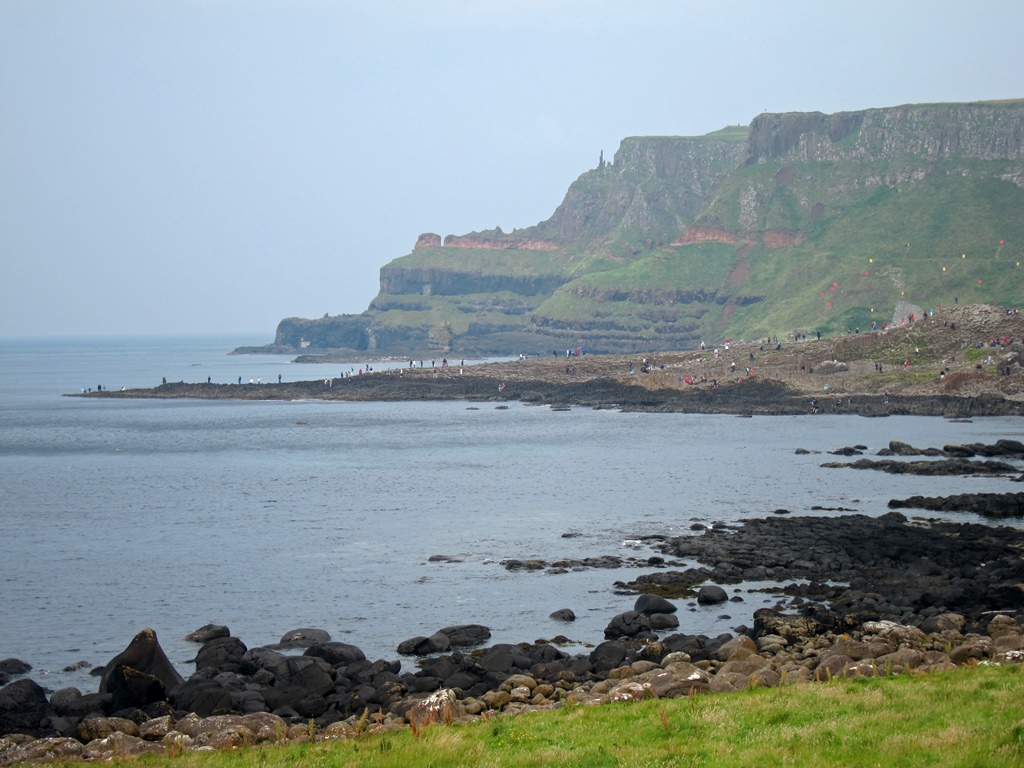
Causeway Area with Tourists
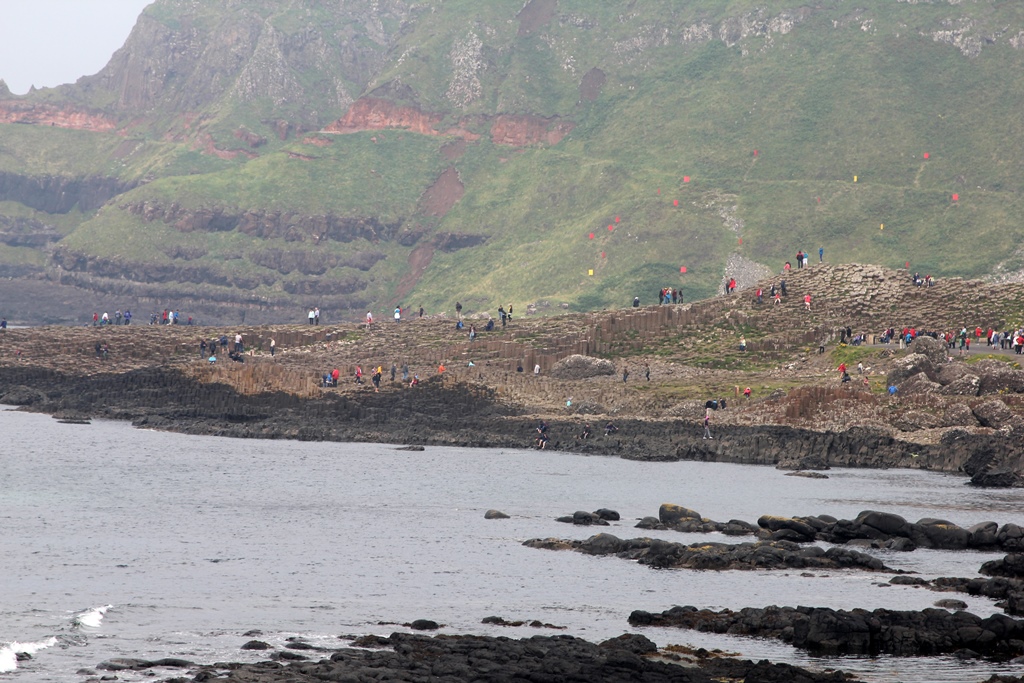
Causeway Area with Tourists
Approaching the Causeway
The Giant's Causeway is a consequence of volcanic activity that occurred in the
region 50-60 million years ago. It seems there was a layer of molten basalt that
contracted as it cooled, causing the fracturing of the basalt into columns with
polygonal cross-sections. The most popular number of sides on the columns is six,
but there are columns with anywhere from four to eight sides. The effect is striking,
but not as unusual as one might think. There are examples of similar basalt columns
all over the world. In the US, for example, the same type of structures can be found
at Devils Postpile in California or at Devils Tower in Wyoming (not sure exactly
what's demonic about them). Closer to Northern Ireland, similar columns can be found
across the water on the Scottish Island of Staffa. The Staffa columns can be seen as
supporting evidence for the story behind the name given to the formation, a story
involving an Irish folk hero named Finn MacCool.
MacCool, besides having the best name ever, was an Irish giant (52 ft. 6 in. tall)
about whom a number of stories are told. There are different versions of this
particular story, but the main idea is that MacCool had challenged a Scottish giant
named Benandonner, whom he'd heard of but never met, to a test of strength.
Benandonner agreed to the challenge, so MacCool set to building a bridge from Ireland
to Scotland so they could meet. On arriving in Scotland, MacCool was able to sneak a
glance at Benandonner without being discovered, and was horrified to find that
Benandonner was a much bigger giant than he was. This being the case, MacCool decided
to skip the contest, and hastily retreated to Ireland, where he crawled into bed and
hid. Eventually Benandonner discovered the completed bridge, and he used it to cross
over to Ireland so he could find MacCool and sort out the strength thing. He found
his way to MacCool's house, only to find MacCool's wife Oonagh. Oonagh pointed to
the bed with the cowering MacCool and admonished Benandonner not to awaken the
sleeping baby. Benandonner did the math and figured that the father of such a
gigantic baby must be really enormous, so he high-tailed it back to Scotland,
destroying the bridge behind him as he went.
This left the remains of the bridge to be marveled at by tourists such as us. We
moved in for a closer look.
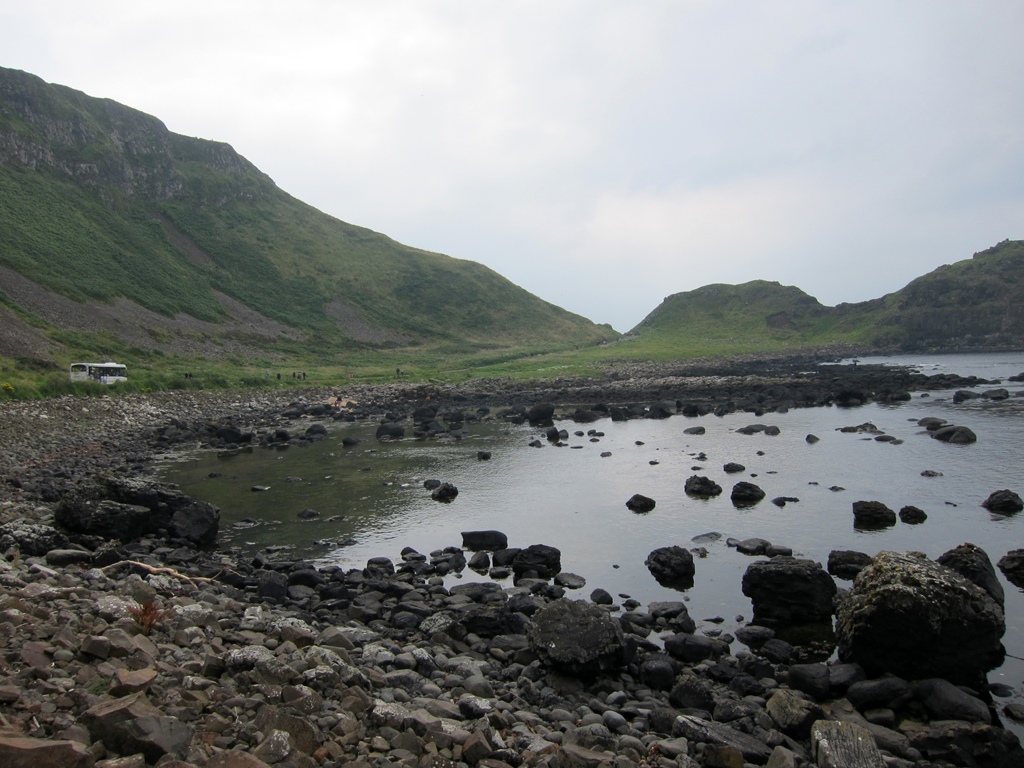
Shoreline, Bus and Hiking Tourists
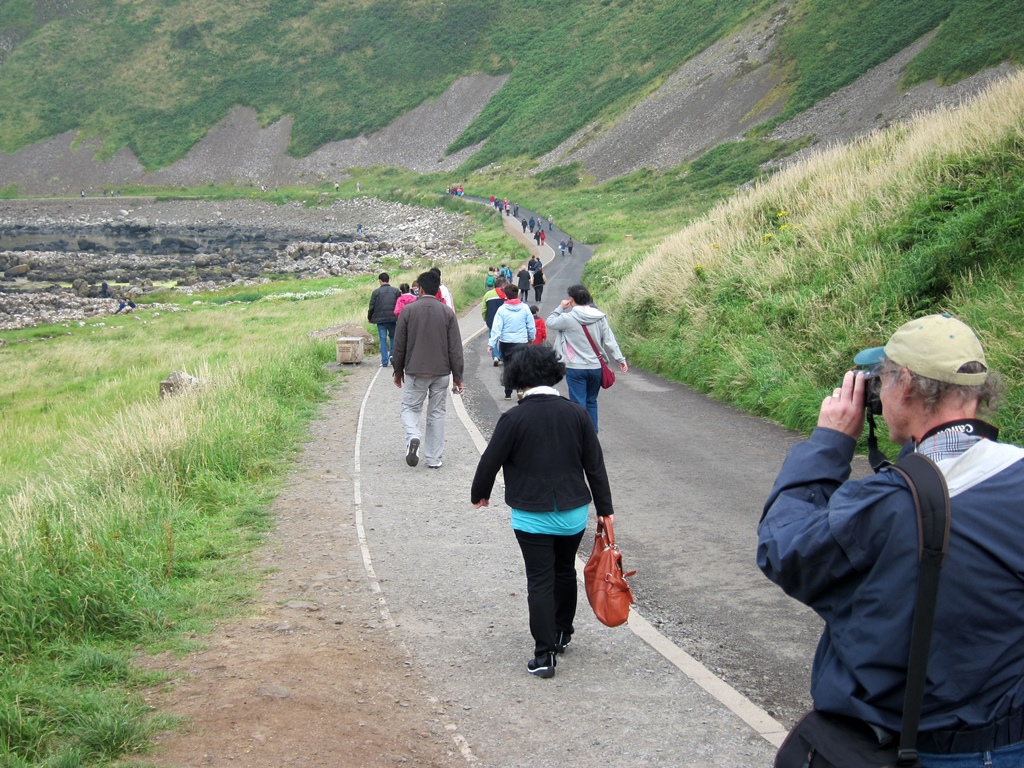
Nella and Bob Heading for Causeway
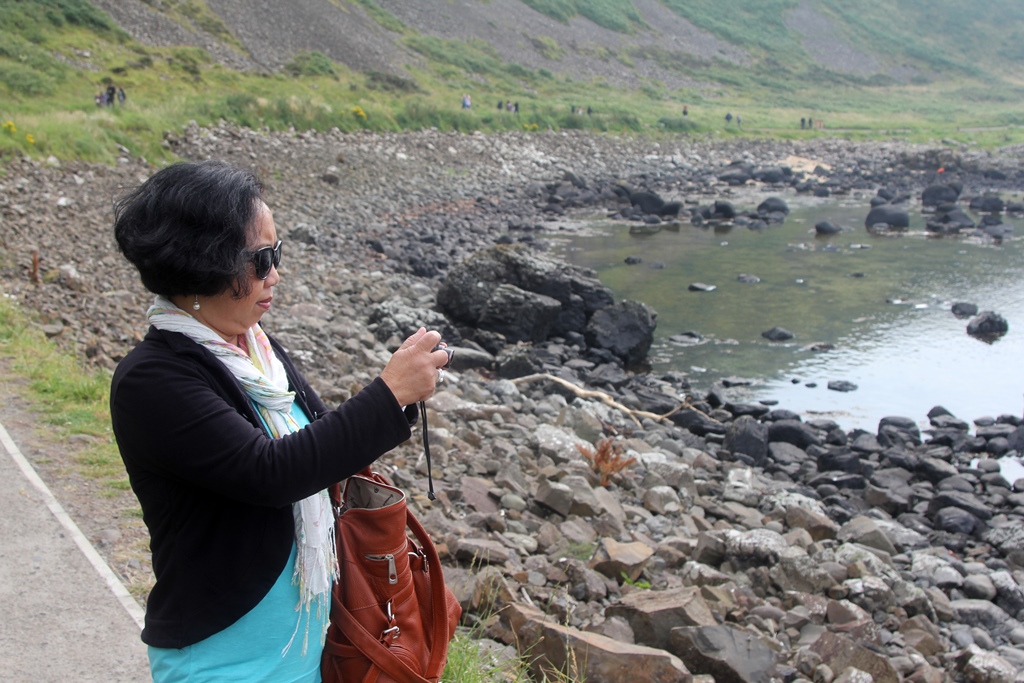
Nella Takes a Picture
On arriving at the Causeway, we found that there were no restrictions as far as
climbing around on the columns and posing for pictures. It also seemed that it
would not be too difficult to hurt oneself pretty badly (especially in wet
weather) if one were to behave stupidly or otherwise be less than careful. But
it was also pretty clear that crawling around on the columns could be a lot of
fun. And it was.
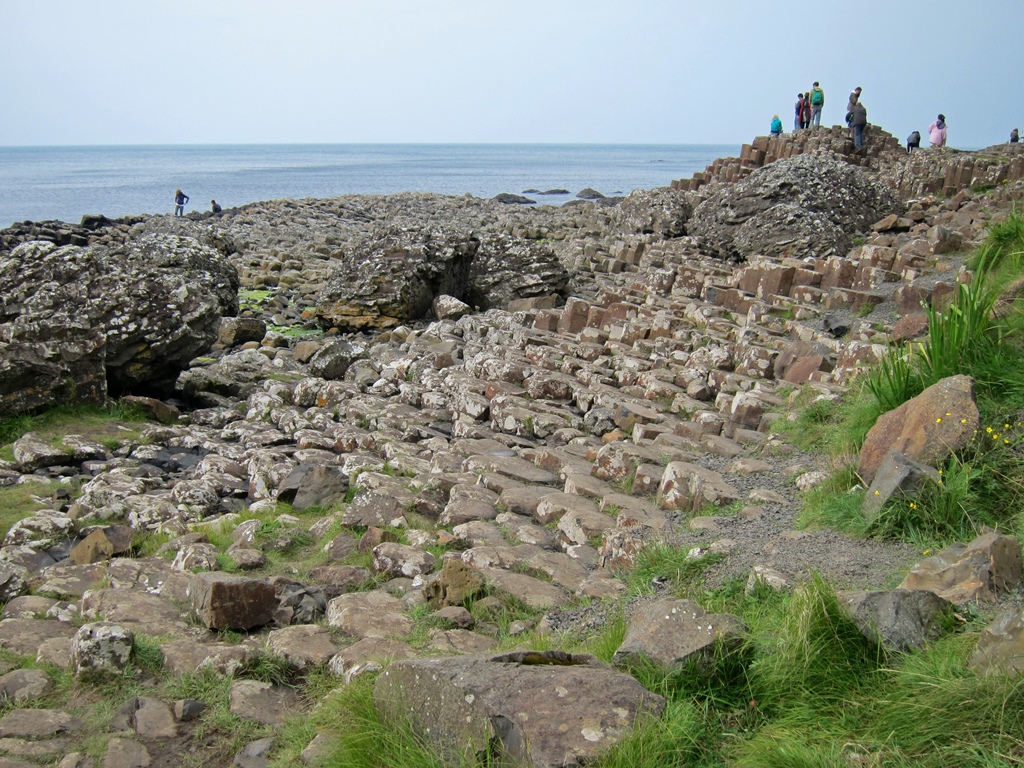
The Causeway
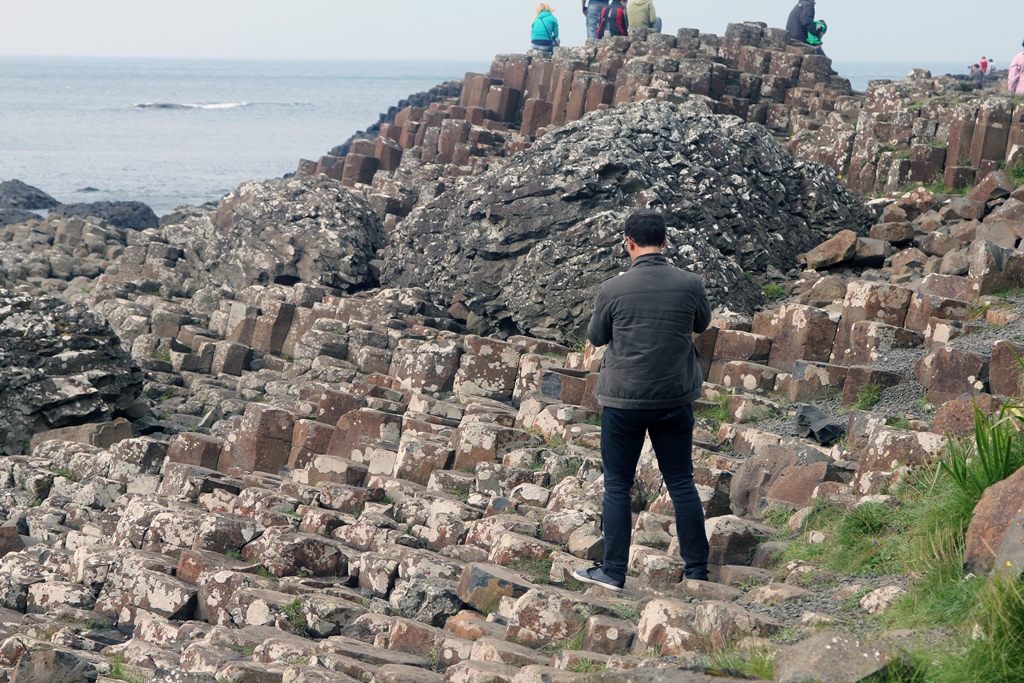
Philip and Basalt Columns
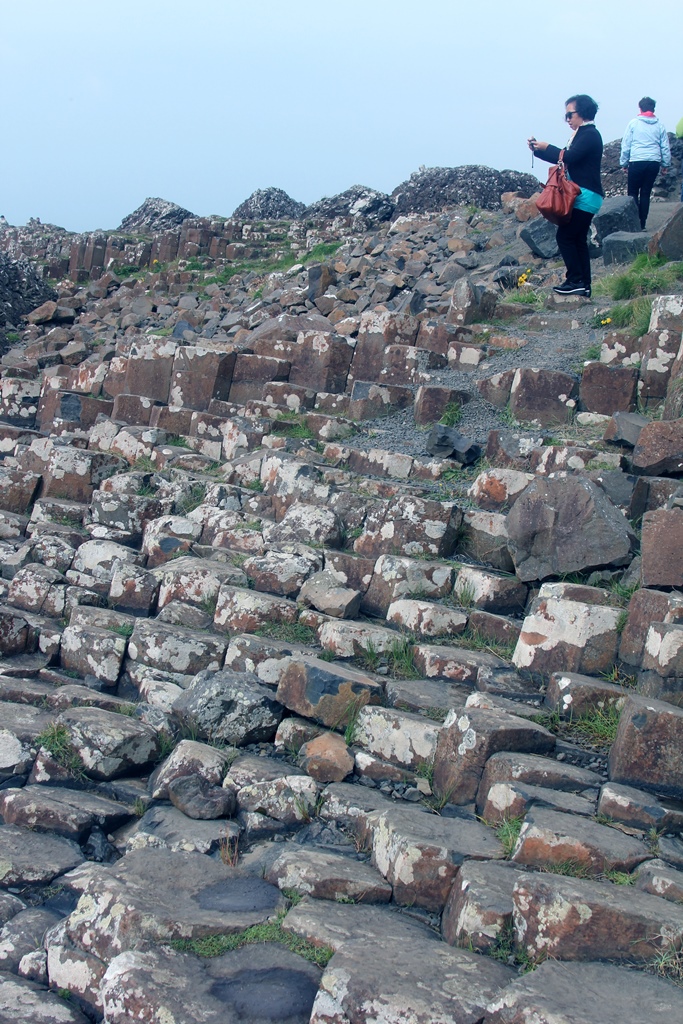
Nella Climbing the Columns
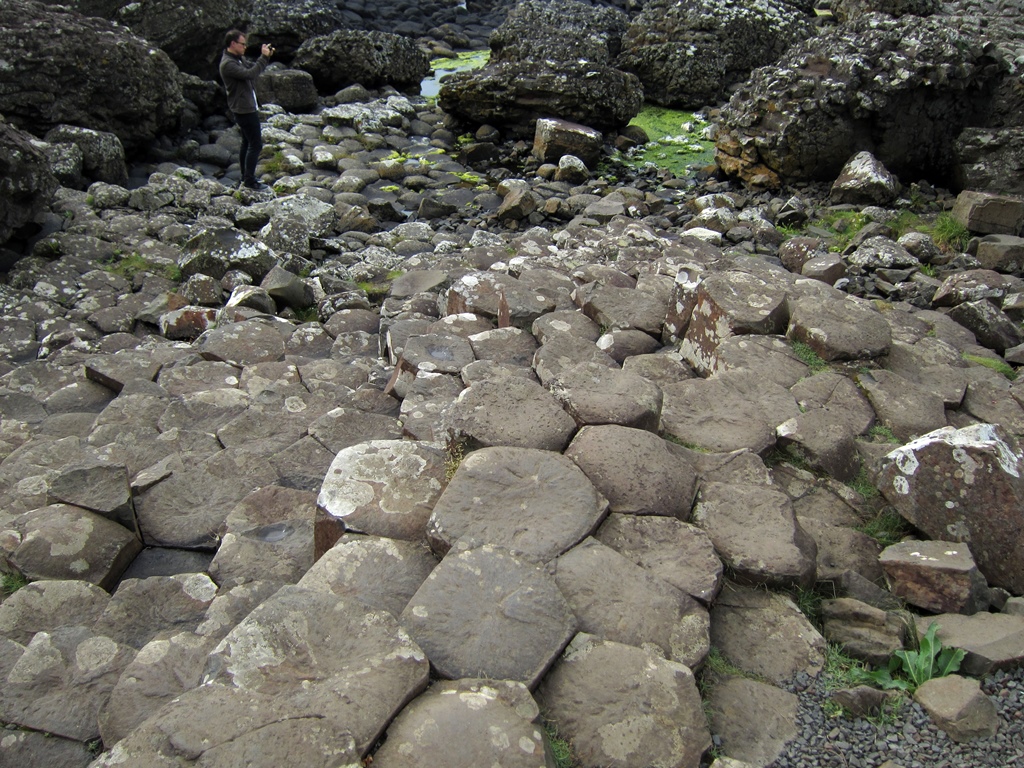
Philip and Hexagonal Columns
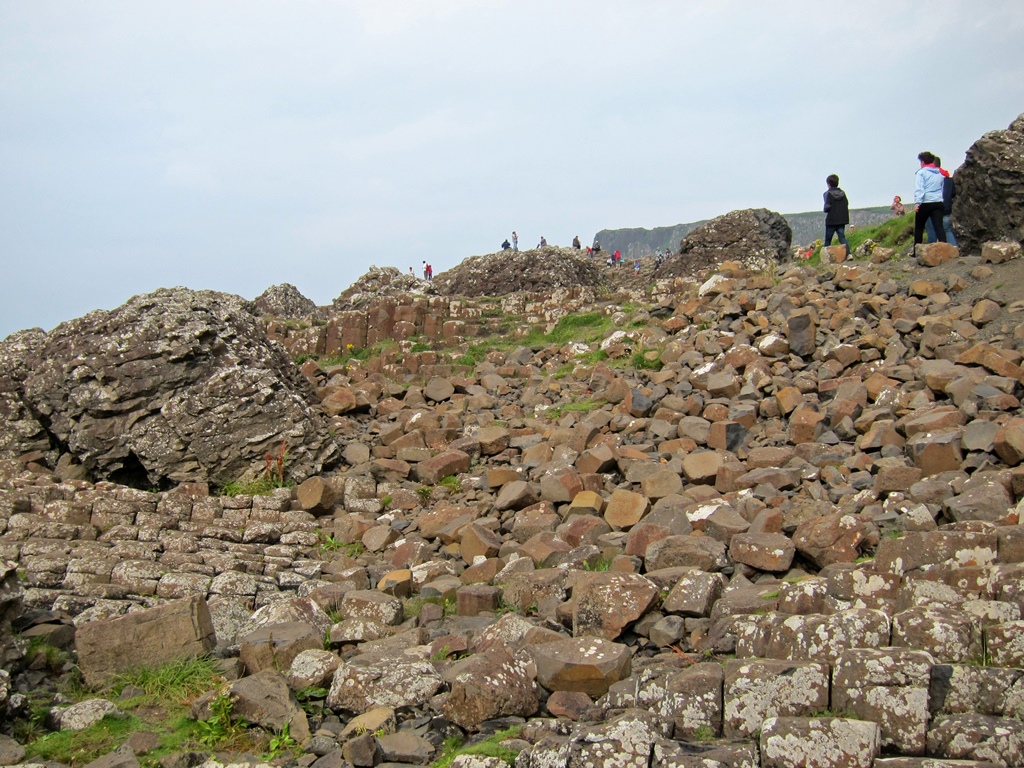
Tourists and Collapsed Columns
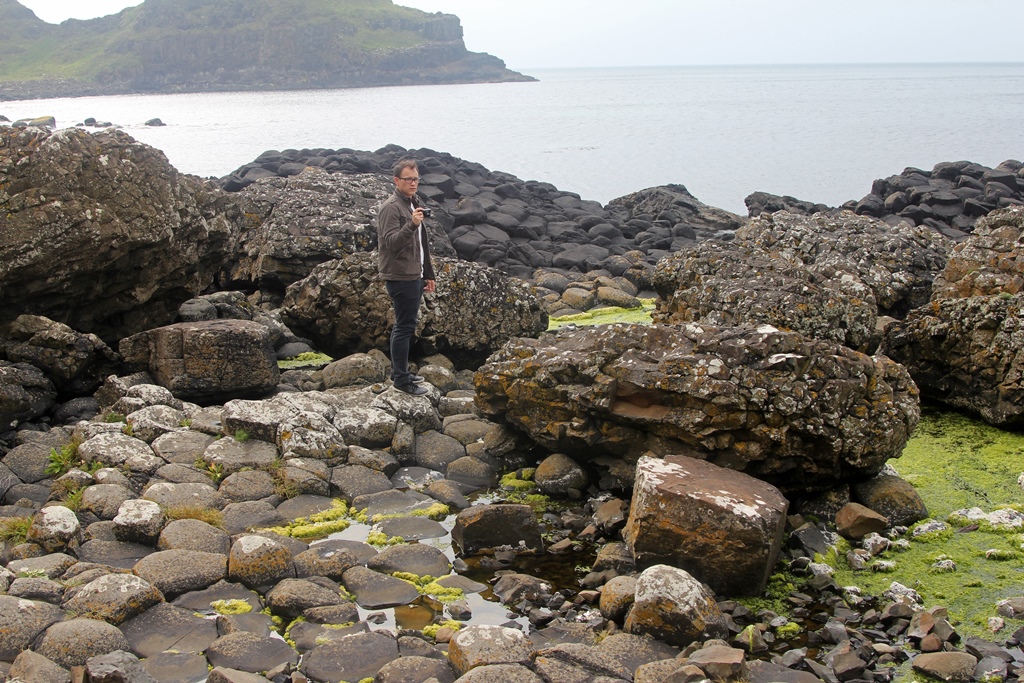
Philip Takes a Picture
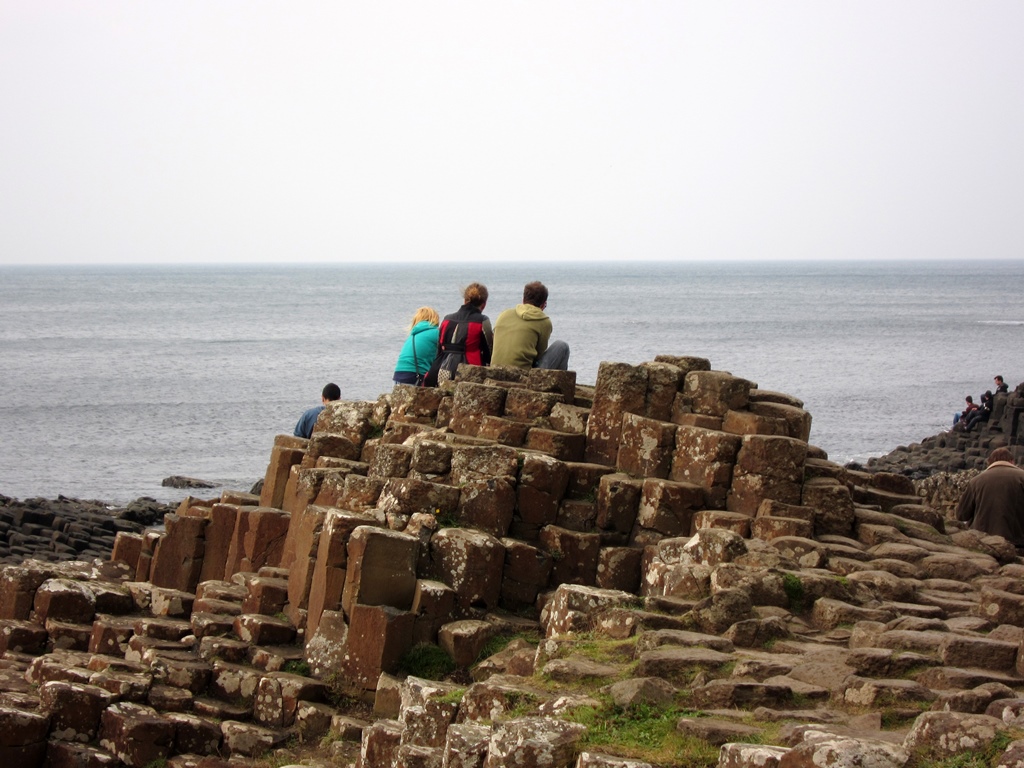
Tourists at Leisure
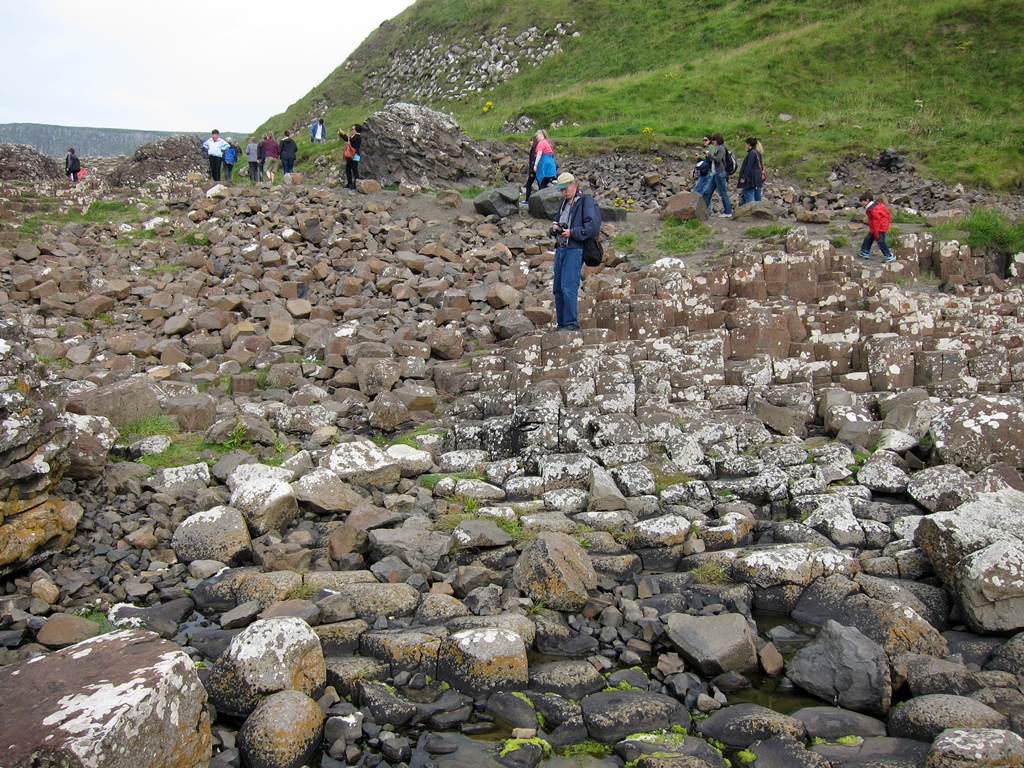
Nella and Bob Climbing the Columns

Philip Climbing Columns
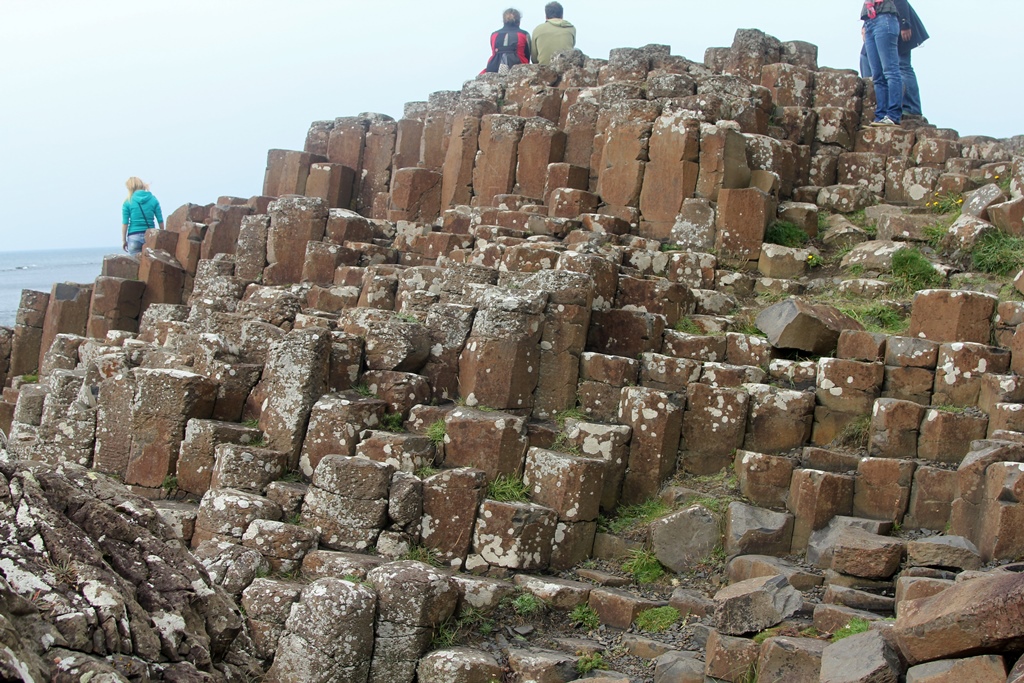
Many Columns
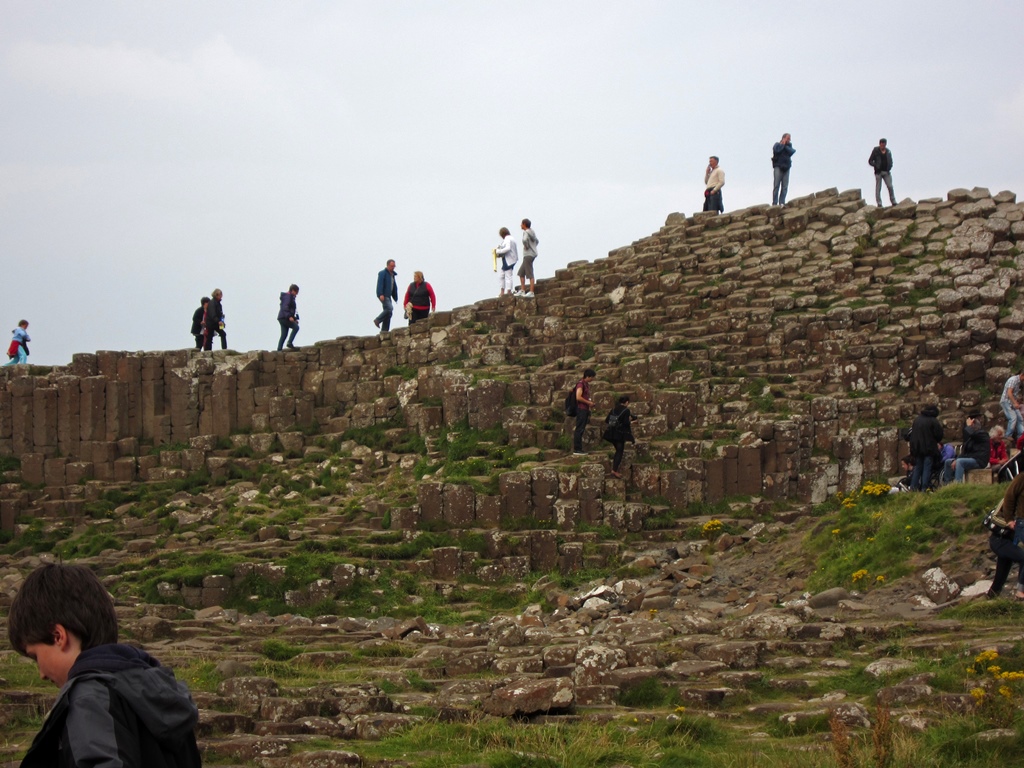
Tourists on Causeway Ridge
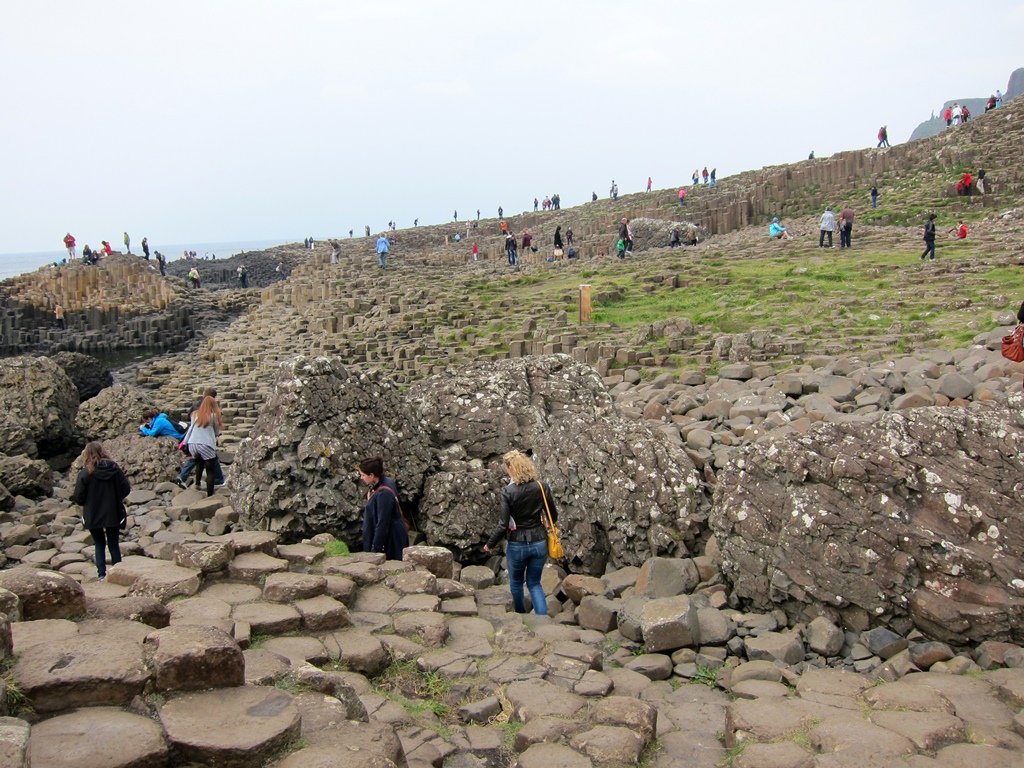
Columns and Tourists
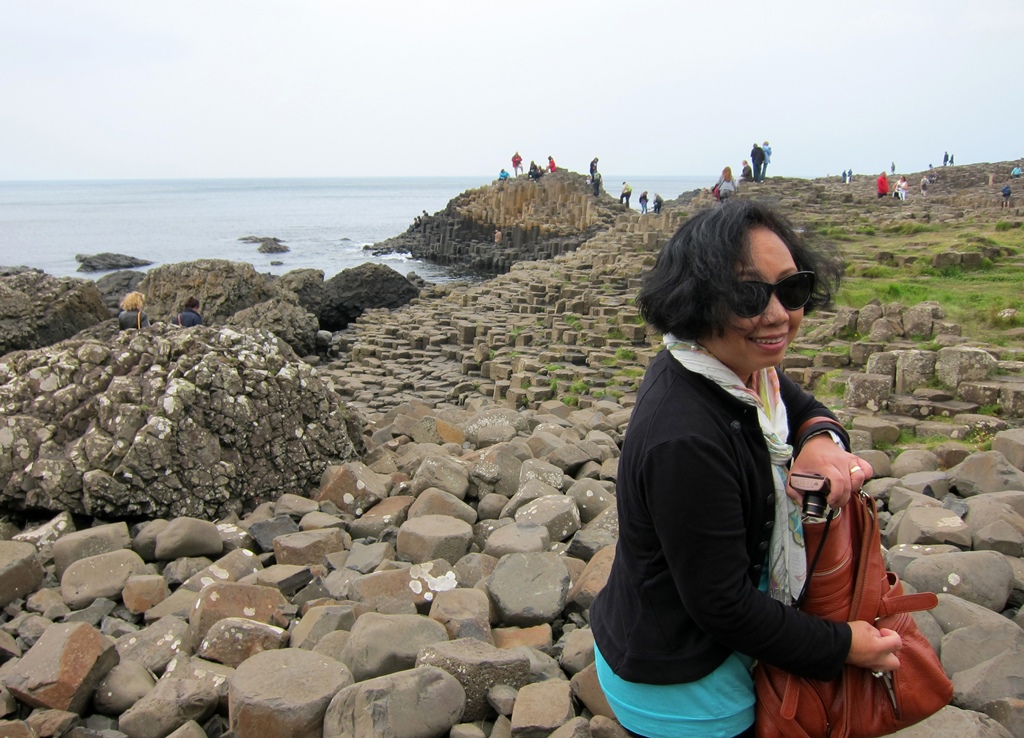
Nella Dealing with Purse
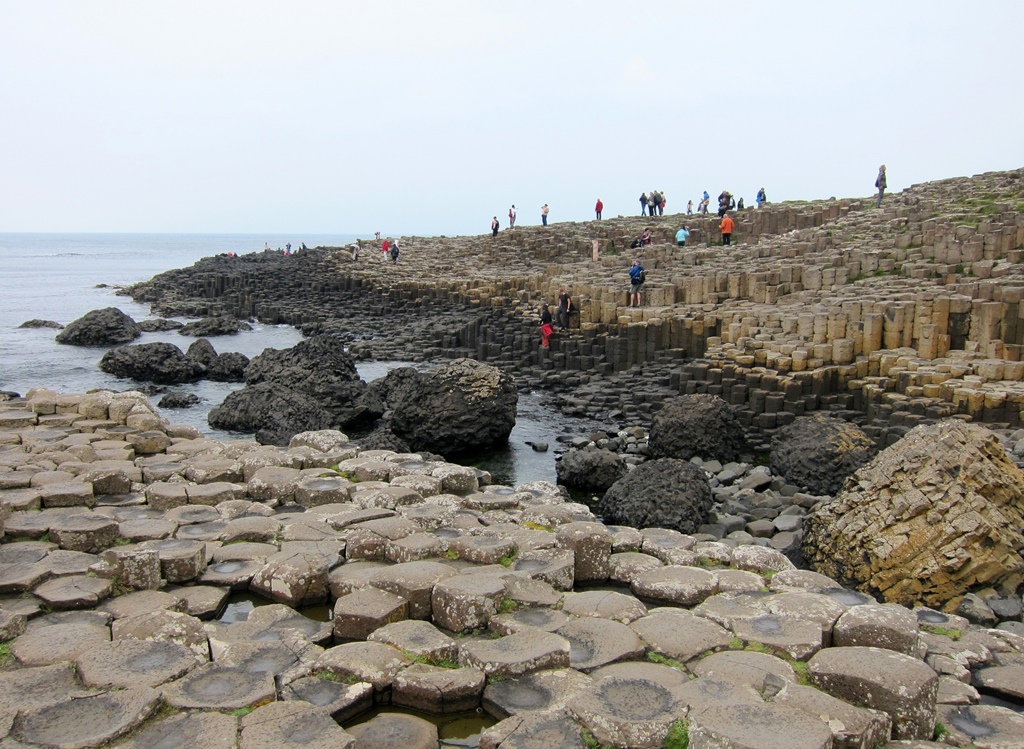
Causeway Into the Sea
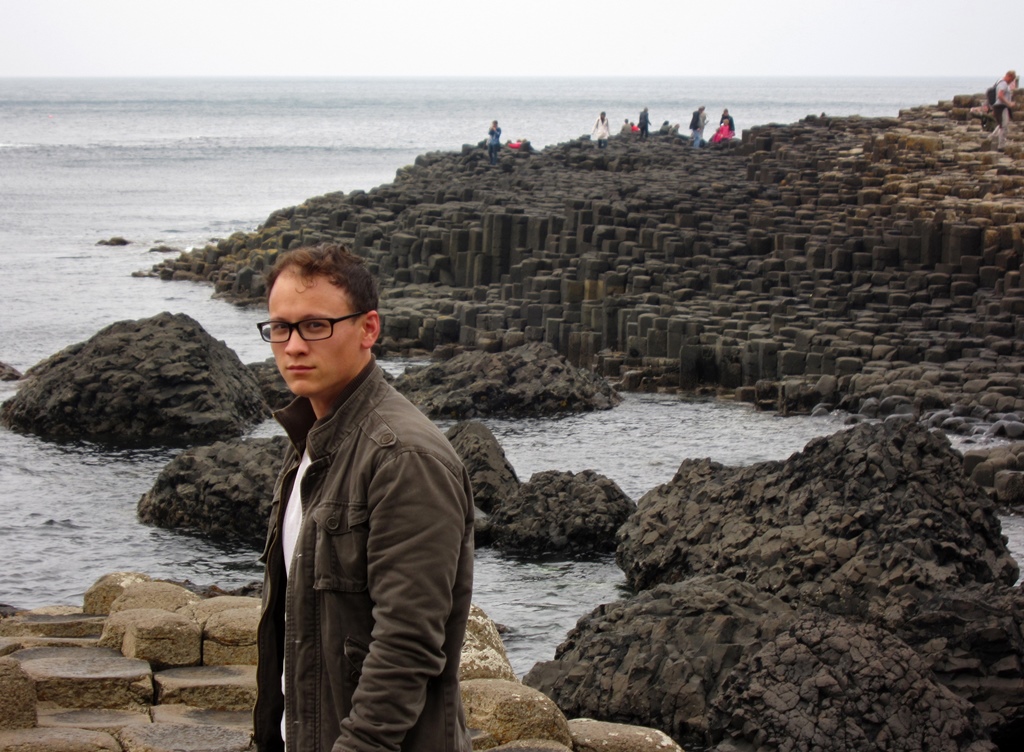
Philip

Nella and Causeway

Philip Climbs Pile of Columns

Philip and Nella on the Causeway
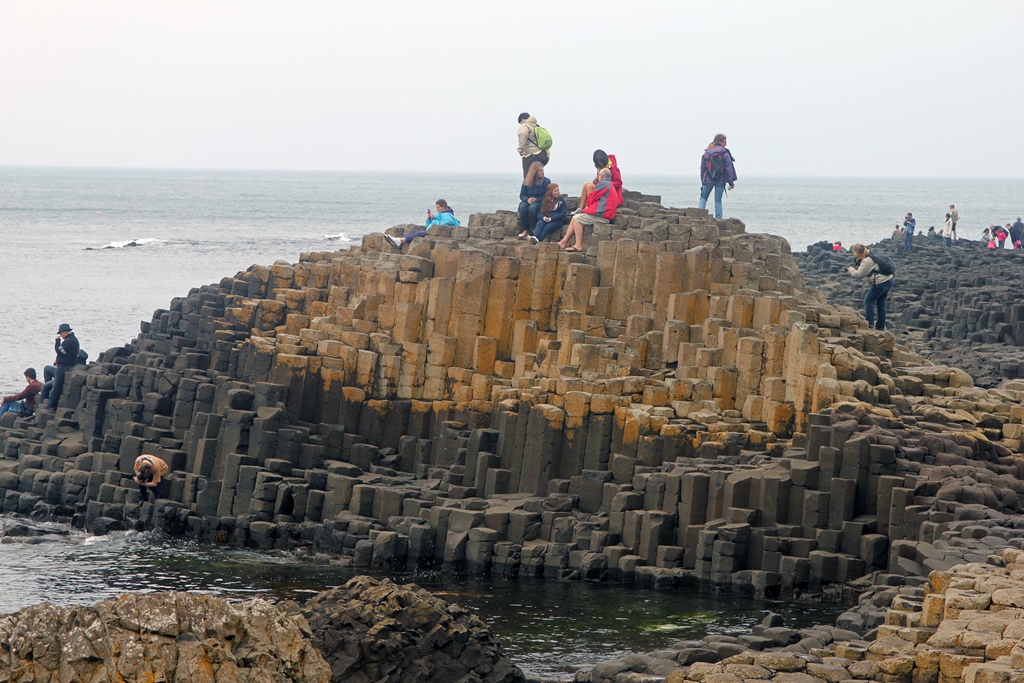
Tourists and Columns
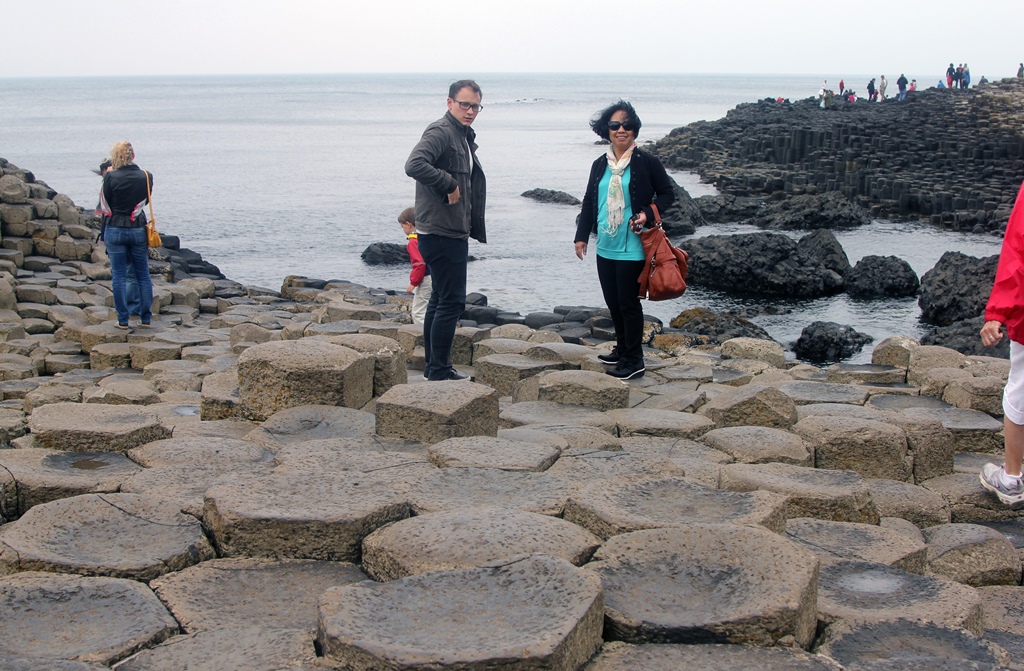
Philip and Nella
Looking back at the hillside from which the Causeway apparently emerged, we
could see what looked like the tops of additional columns among the grass - maybe
more waiting to be added to the Causeway as the hillside erodes.
Columns Embedded in Embankment
Having had our fill of the Causeway, we were curious to see what was on the other
side. We found a trail through a gap in the columns at the base of the Causeway
(a gap we later found to be called the Giant's Gate) and walked through it, looking
back to see what the Causeway looked like from this side.
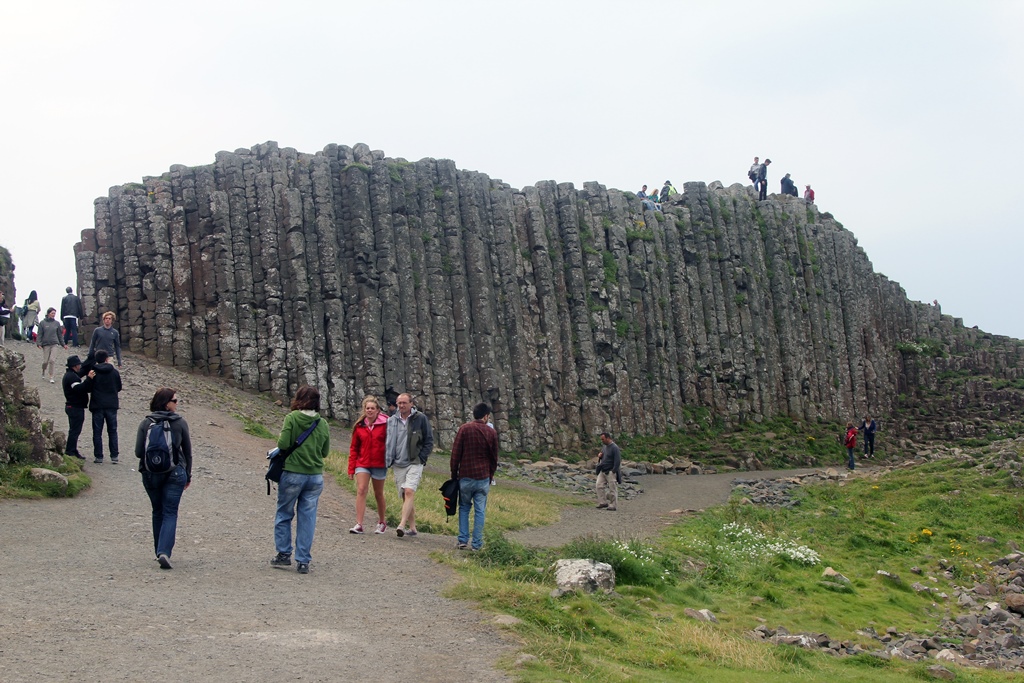
Giant's Gate
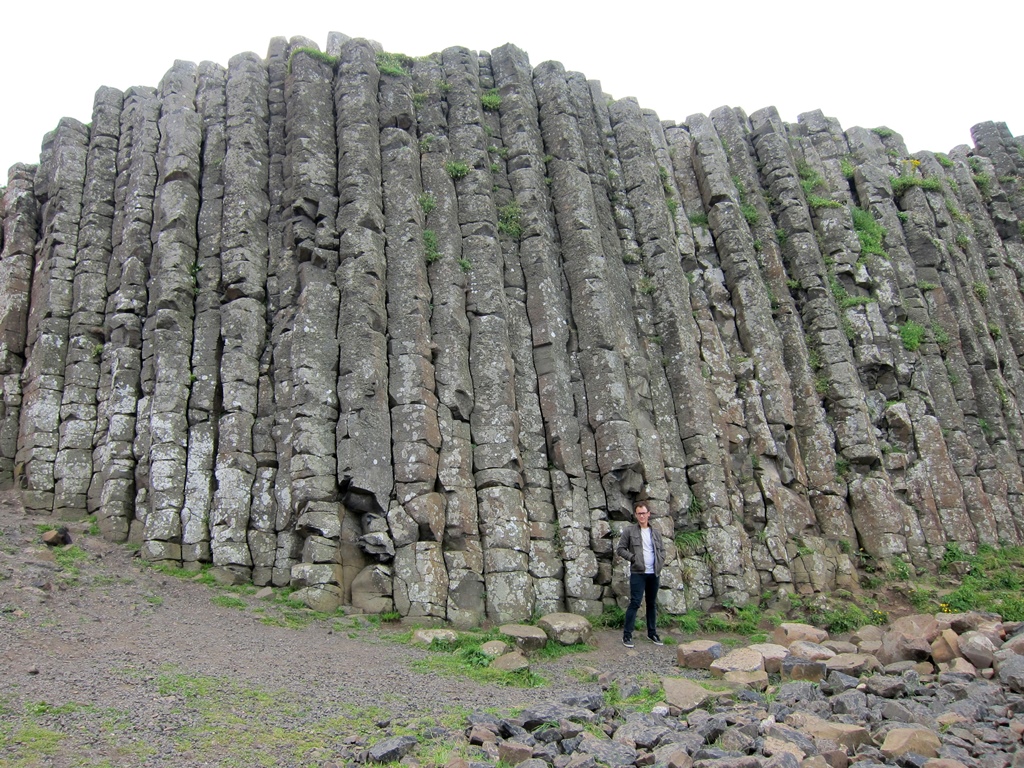
Philip at Giant's Gate
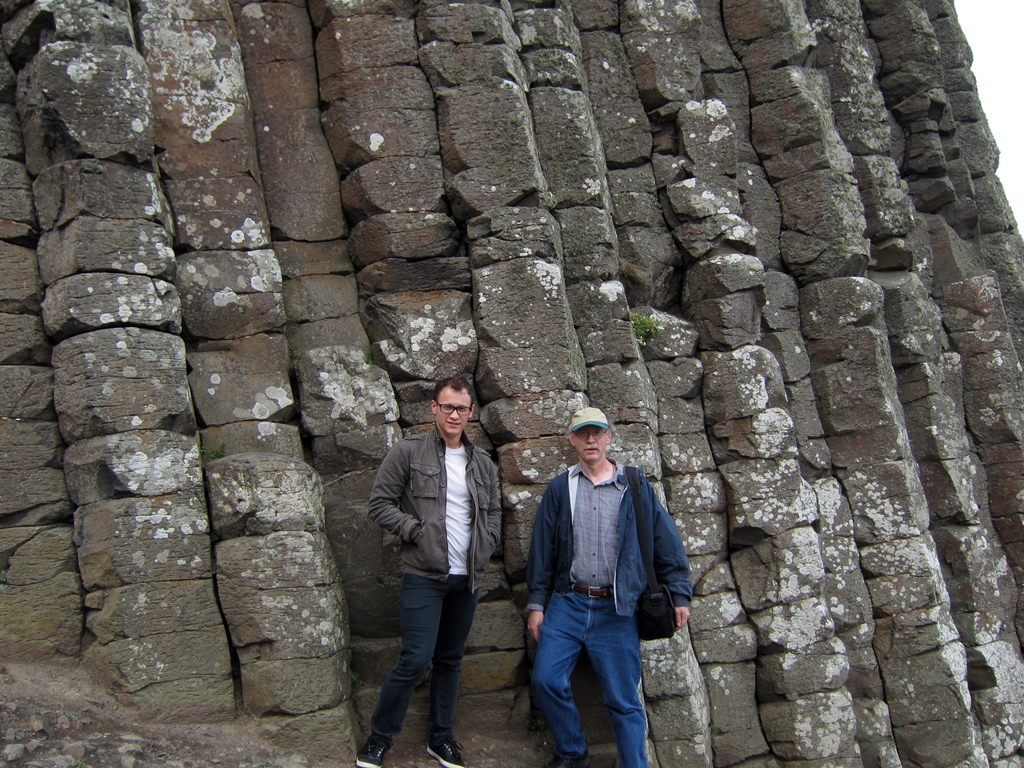
Philip and Bob

Nella at Giant's Gate
Looking ahead, we could see that the trail followed the shore for awhile, and then
rose up to follow the face of a cliff.
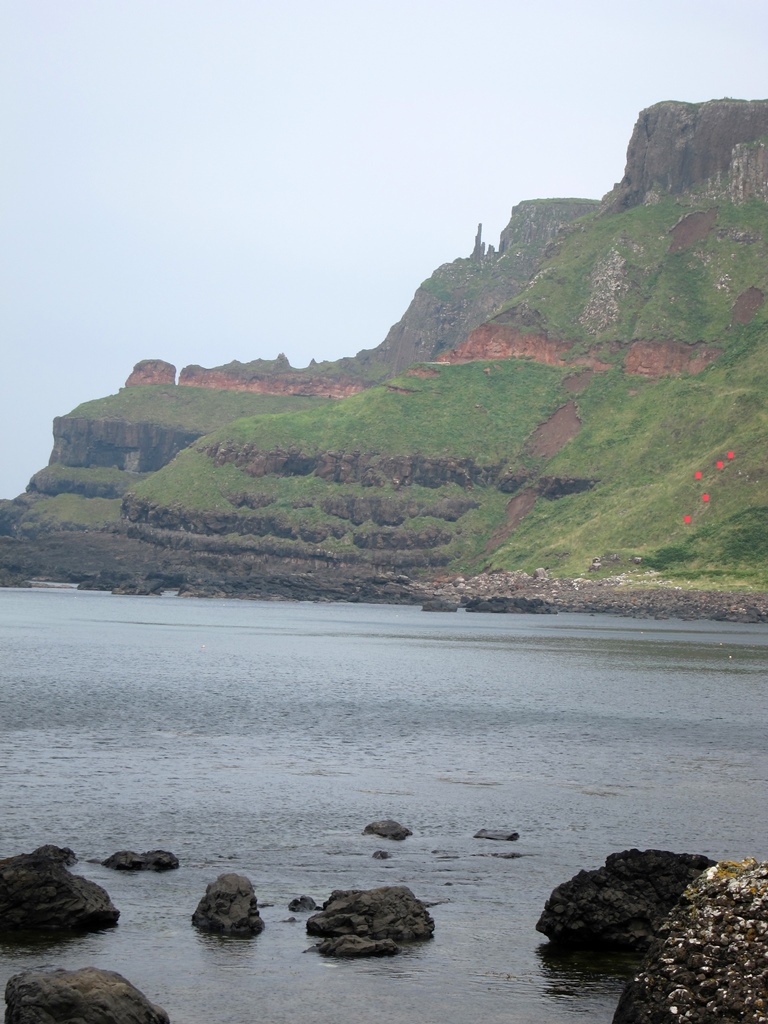
East of Causeway with 'Chimney Stacks'
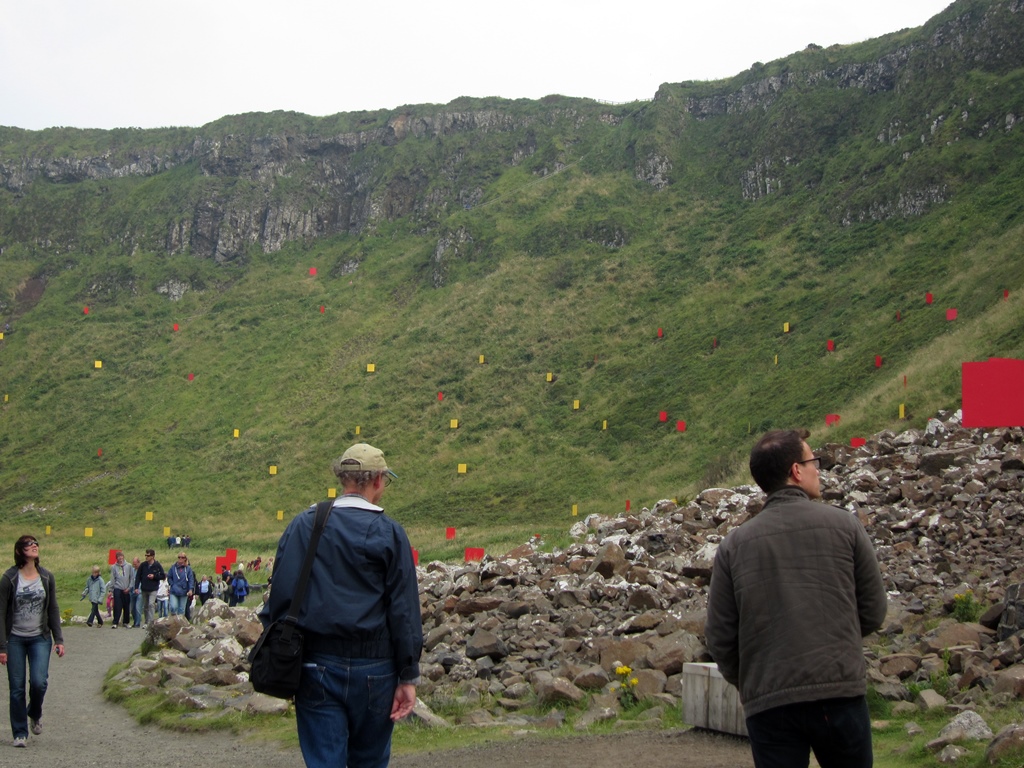
Bob and Philip and Hillside
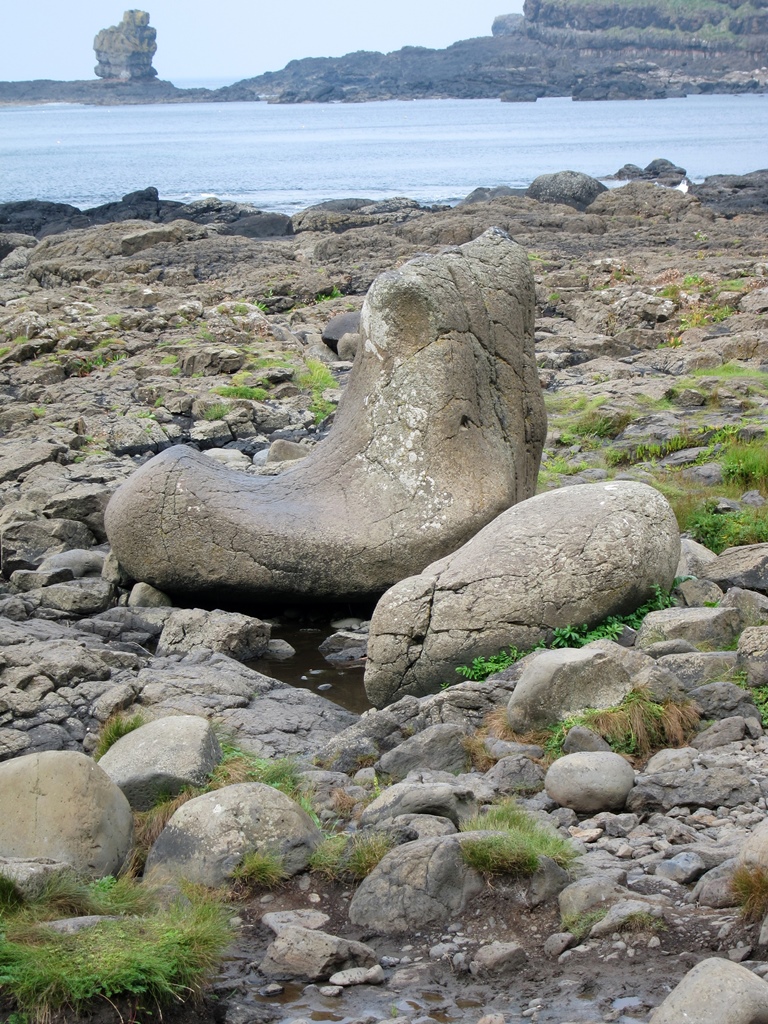
The "Giant's Boot"
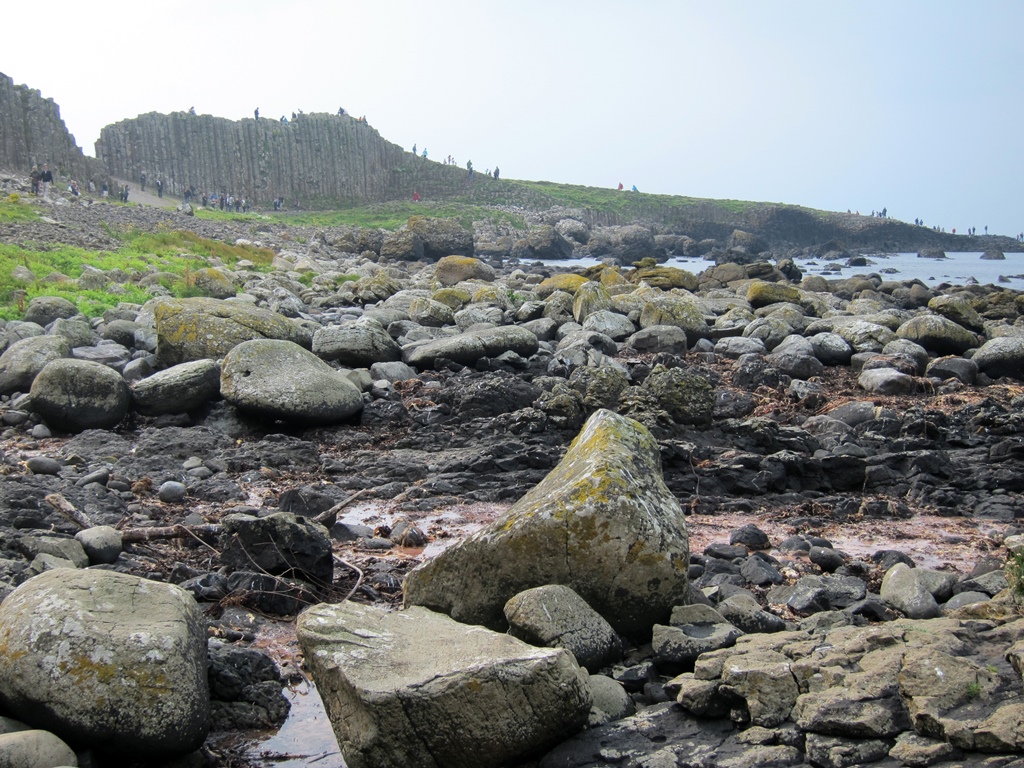
Seashore and Giant's Gate
Philip and I followed the trail, heading for a tall column formation (called
The Organ) which was embedded in the cliff. There was a nice view as the
trail climbed the cliff.
"The Organ"
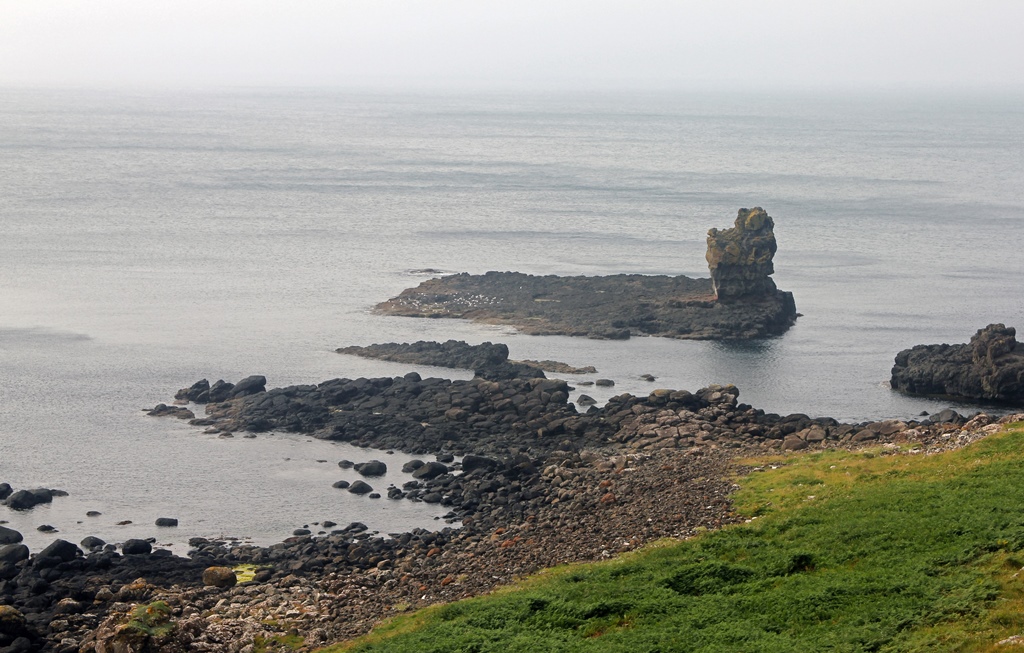
Seashore, Eastern Causeway Area
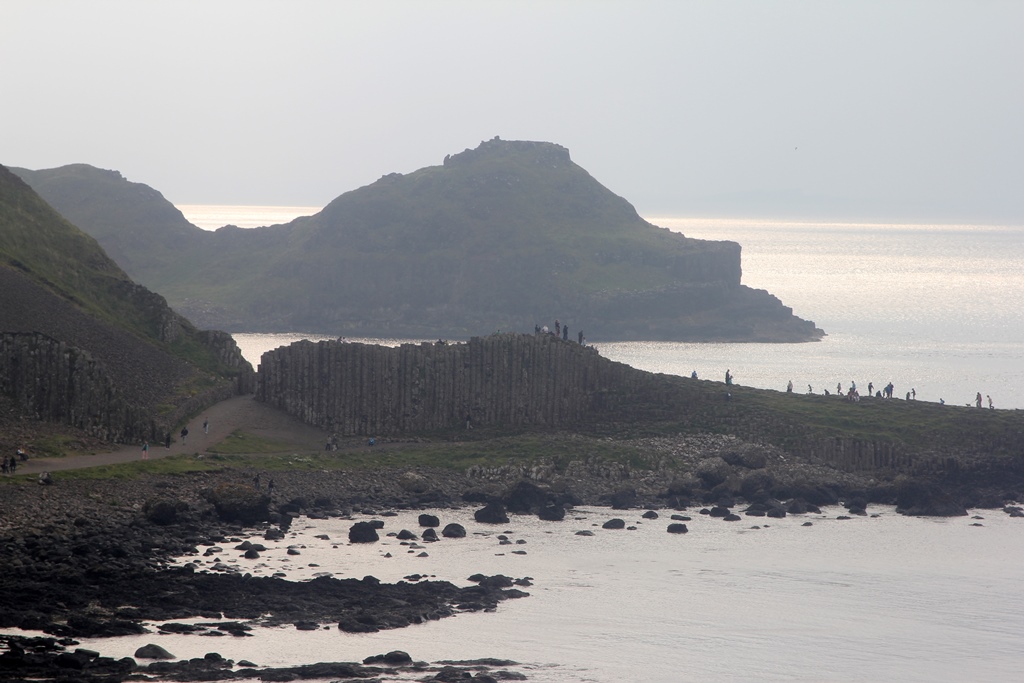
Giant's Gate
Eventually we reached The Organ, where we discovered that the trail ended. Apparently
the trail normally goes farther, but there had been a rockslide which made for
dangerous conditions.
Tourist and The Organ

Seashore and End of Trail
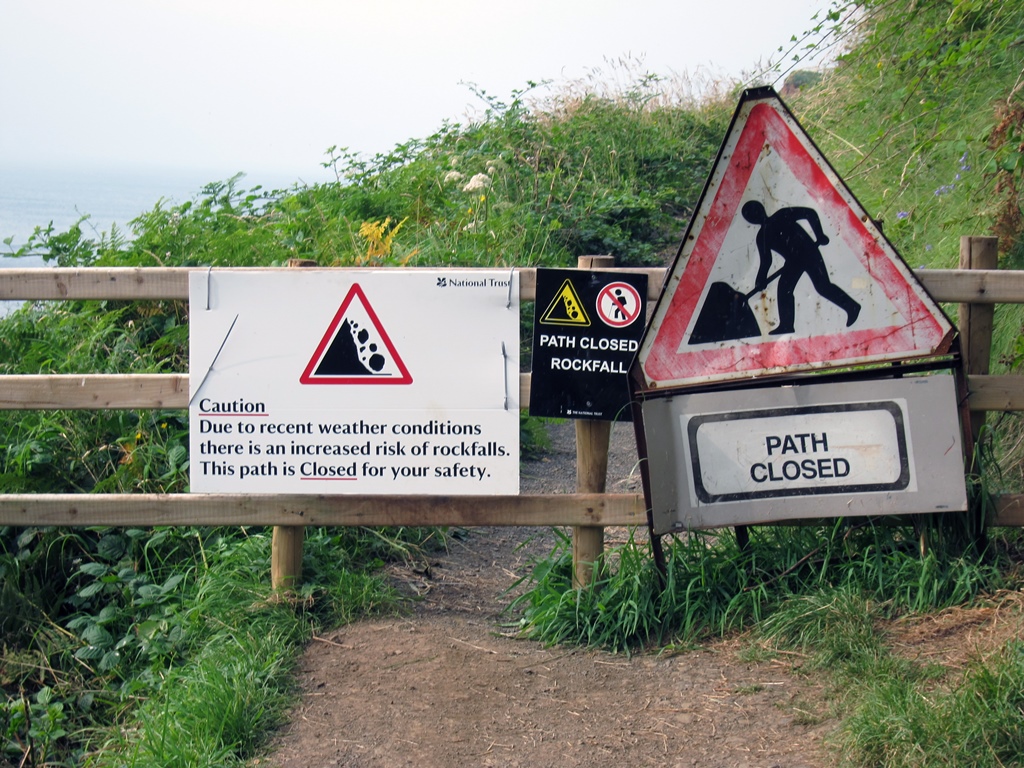
End of the Trail
We returned through an increasing sprinkle to the Causeway, where we collected
Nella and used the shuttle bus to return to the Visitors' Centre. We crossed
to the parking area and found our tour bus. The rest of our fellow tourists
also eventually returned, and we headed back toward Belfast.
Signpost
The tour bus dropped us off back at our hotel, from which we walked south in
search of dinner. We eventually found an Italian restaurant called Speranza,
where we satisfied the hunger we'd accumulated during the day's exertions.
Speranza Italian Restaurant
The following day, as already discussed, we returned to Titanic Belfast in the rain,
and then we found some lunch. After this we got on a train and headed to our next
destination. But rather than continue right away with the next stop on our
itinerary, I'd like to include one more page for Belfast, to show some of the
miscellaneous Belfast sights we'd seen during our stay there.

